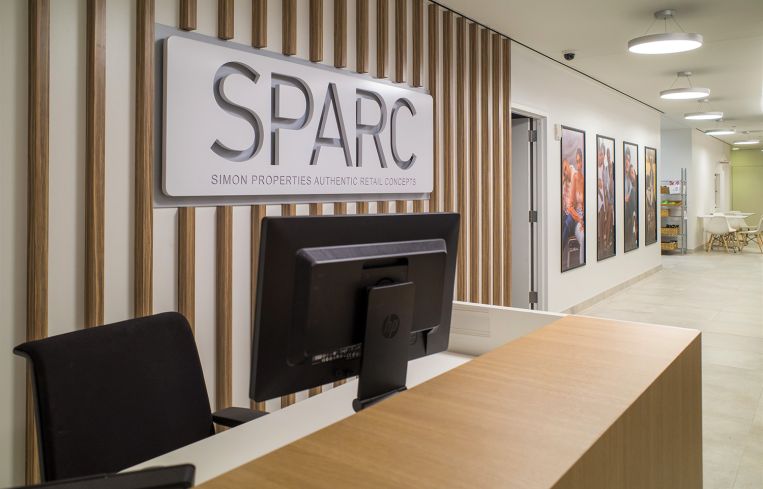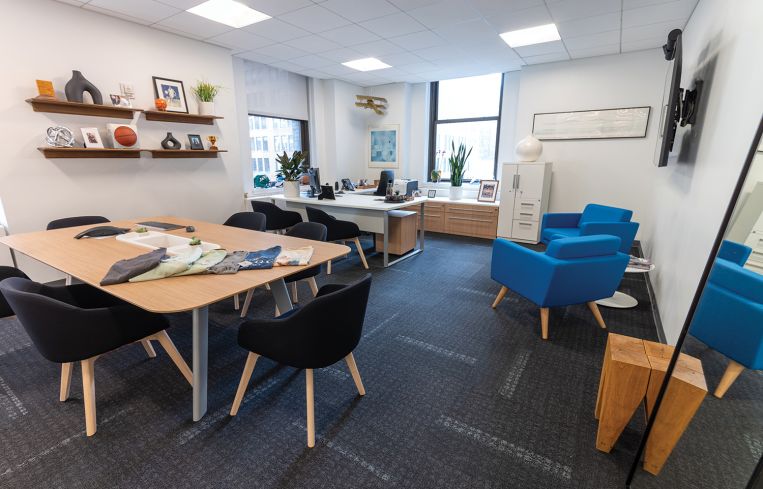How do you design an office for a company that has multiple clothing brands, and needs design and showroom space for all of them? Father-and-son architecture team George and William Kimmerle were faced with that challenge at 11 Penn Plaza, where they had to create 175,000 square feet of offices for 600 employees at sparc group.
SEE ALSO: BXP Buys Beleaguered D.C. Office for $55M, Inks Anchor Lease With Global Law Firm
The retail holding company currently owns a slew of mainstream brands, including Aeropostale, Brooks Brothers, Eddie Bauer, Forever 21, Lucky, Nautica and Reebok. SPARC needed traditional office and conference space, design studios and mock retail stores that serve as showrooms for apparel buyers.
A series of workrooms for designers can be outfitted with sets themed around whatever collection the brand is developing.
For example, “Nautica built a beach inside a workroom so their designers can be in an environment that will look and feel like” the design inspiration for the clothes, explained William Kimmerle. Brooks Brothers has a relatively sparse meeting room for designers that features long racks of colorful sweaters, dress shirts and khakis, along with a large standing mirror and a long glass conference table.
And brands that like to repeat designs, such as Eddie Bauer, have physical archives of past designs, so they can reproduce scarves, boots or pants from decades ago. The design teams also have fitting rooms with stages, where they can have models come in and model the clothes for executives or apparel buyers.
The space also has full retail stores — like the kind you’d find in a mall — with glass fronts, dressed-up mannequins, window displays and stocked shelves. While they aren’t operational, they allow SPARC Group executives to test store layouts and show buyers from department stores and e-commerce operations how the clothing can be styled and presented in-store.
Besides design spaces, there are photography studios and offices for the teams working on wholesale work, marketing and e-commerce.
Then there are the kinds of rooms you’d find in any office, like small to midsize meeting rooms with high-top tables where designers can lay out apparel, and a large boardroom with a retractable wall that can be converted to two separate rooms for employee training. Open kitchens with rows of white bench seats and tables give workers a place to eat, and there are nap rooms and rooms for nursing mothers.
“The whole process of catalog sales, e-commerce, producing all that copy and imagery, that’s all part of the process that’s going on here,” William Kimmerle explained.
Rebecca Baird-Remba can be reached at rbairdremba@commercialobserver.com.








